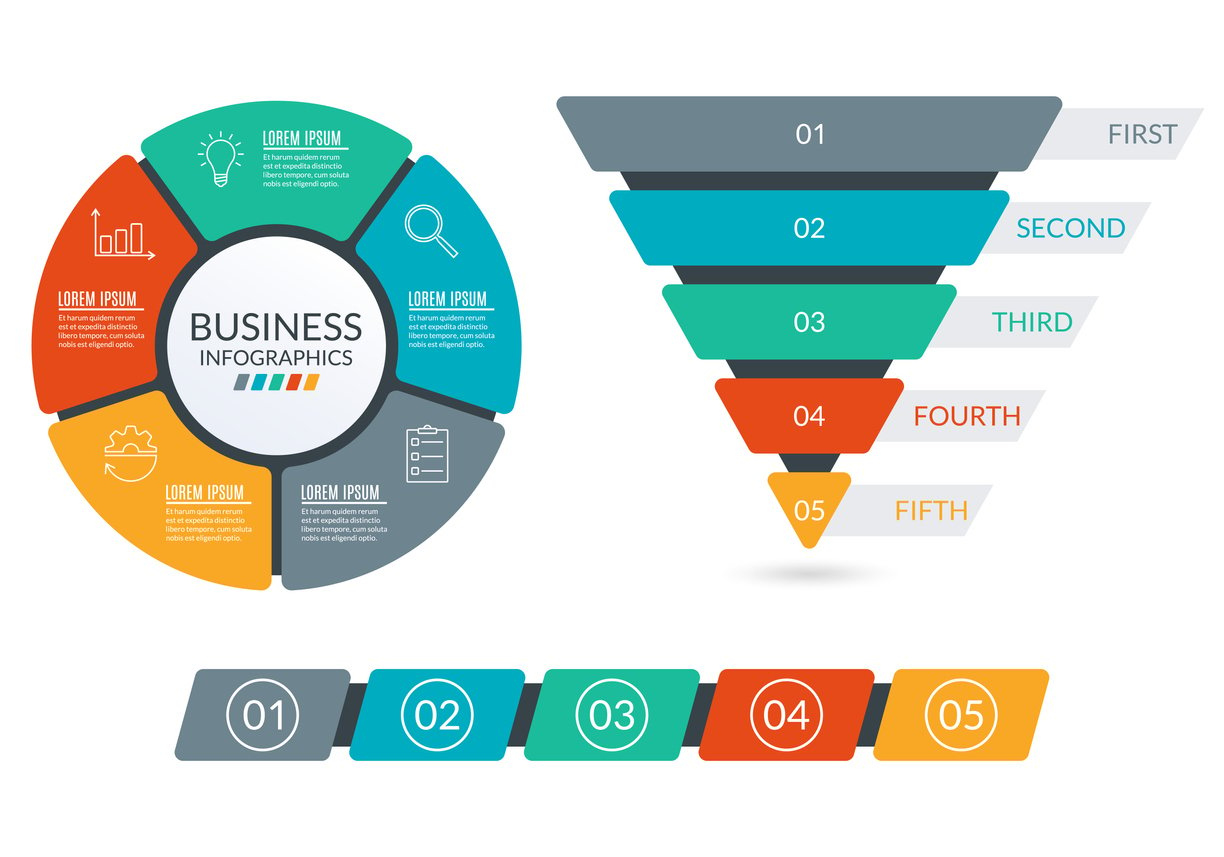
10+ Marketing KPIs You Need to Track (And How to Use Them)
 Updated on
Updated on
 By Carlos Correa
By Carlos Correa
Carlos Correa
Carlos has been involved in the sales space for well over ten years. He began in the insurance space as an individual sales agent, managing teams as s...
learn more
Carlos Correa
Carlos has been involved in the sales space for well over ten years. He began in the insurance space as an individual sales agent, managing teams as s...
Table of Contents
Table of Contents
There's a big difference between throwing spaghetti at the wall and knowing exactly what's working in your marketing strategy. If you're not tracking the right marketing key performance indicators (KPIs), you could be wasting time, budget, and effort on tactics that barely move the needle.
Metrics aren't just numbers on a dashboard, they're your clearest signal of whether your strategy is actually delivering results. But with so many KPIs out there, how do you know which ones matter?
Stick around because we're breaking down the essential marketing KPIs you should be tracking and how to make use of them.
How to Choose Marketing KPIs That Matter

Choosing the right marketing KPIs can make or break your sales strategy. Instead of tracking every sales metric, focus on the ones that genuinely reflect your goals. The right KPIs offer clarity, guide decision-making, and highlight performance.
Here's how to choose marketing KPIs that genuinely move the needle for your business.
1. Align KPIs With Business Goals and Funnel Stage
To choose KPIs for marketing that move the needle, start by aligning them with your overall business goals and the buyer's journey. Ask yourself: what are you trying to achieve, brand awareness, lead generation, or conversions? That clarity helps determine the right KPIs in marketing for each funnel stage.
For instance, if your business goal is lead generation, then performance marketing KPIs like cost per lead (CPL) or conversion rate make more sense than vanity metrics like impressions.
At the top of the funnel, you might track reach, CTRs, or engagement. But as you move further down, KPIs marketing teams should watch include Marketing Qualified Leads (MQLs), Sales Qualified Leads (SQLs), and Return on Investment (ROI).
2. Tie KPIs to Buyer Personas (e.g., insurance agent, recruiter, sales rep)
Choosing the most essential marketing KPIs starts with understanding your buyer personas. Different roles have unique needs, motivations, and decision-making processes, so your KPIs should reflect those differences. Growth marketing KPIs that work for an insurance agent might fall flat for a recruiter.
Let's elaborate on that below:
- Insurance Agents: KPIs should track lead quality and conversion rate from educational content or webinars.
- Recruiters: Prioritize engagement rates and form submissions from niche job boards or LinkedIn campaigns.
- Sales Reps: Focus on marketing-influenced revenue and time-to-convert from MQL to SQL.
By tying KPIs to the goals of each persona, you guarantee that your marketing campaigns are strategically aligned with real outcomes, not vanity metrics. Whether it's CPL or CTR, pick KPIs for marketing campaigns that answer: "Is this moving my ideal customer closer to conversion?"
3. Avoid Vanity Metrics
When choosing marketing KPIs to track, it's easy to get distracted by vanity metrics. These are numbers that may look impressive but don't reflect real performance or drive business outcomes.
Likes, followers, or page views might provide a feel-good boost, but they rarely offer insight into the actual impact of your marketing efforts.
If you're asking, "What are marketing KPIs that really matter?", they're tied to revenue, engagement, or conversions, metrics that align with your business goals.
To avoid vanity metrics, focus on sales KPIs that measure ROI, lead quality, conversion rates, and customer retention, not just surface-level stats.
4. Include Checklist Table
A practical way to select effective marketing KPIs to track is by using a checklist table. This tool helps marketers define goals, map them to actions, and assign measurable indicators.
For instance, if your objective is brand awareness, the corresponding marketing funnel KPIs might include reach and impressions, but make sure they're linked to deeper funnel actions like engagement or website sessions.
The checklist should distinguish between actionable and vanity metrics. Under each goal, include columns for KPI name, funnel stage, target value, and data source. This structured approach simplifies decision-making and ensures your top marketing KPIs are relevant, realistic, and measurable.
The Marketing Funnel and KPI Selection

Understanding the marketing funnel is essential when choosing KPIs that truly matter. Each stage, from awareness to conversion, requires different metrics to measure success. By aligning growth marketing KPIs with specific funnel stages, you can track performance effectively and identify which efforts drive results across your marketing campaigns.
Breakdown of Funnel Stages: Awareness → Consideration → Decision → Loyalty
The funnel: Awareness, Consideration, Decision, and Loyalty, acts as a roadmap for selecting key marketing KPIs that measure performance where it matters most. Here's how the funnel flow works:
- In the Awareness stage, focus on reach, impressions, and traffic—top marketing KPIs for brand visibility.
- The Consideration stage calls for metrics like bounce rate, time on site, and content engagement.
- During Decision, your growth marketing KPIs shift to lead conversion rate, cost per acquisition (CPA), and demo requests.
- Finally, Loyalty relies on retention rate, customer lifetime value (CLV), and referral tracking.
Example KPIs for Each Stage
To track marketing performance effectively, it's essential to align your KPIs with the stages of your customer journey. Below is a breakdown of key marketing KPIs tied to each stage, to help you measure what matters most and make data-driven decisions at every step.
1. Awareness
This stage focuses on making your brand visible and generating interest among potential customers. KPIs here help you understand how far your message is reaching.
- Impressions: Measures how many times your content is displayed, indicating visibility.
- Reach: Tracks the number of unique individuals who see your content, showing the scope of your exposure.
- Brand mentions: Captures how often people are talking about your brand online, reflecting organic awareness and buzz.
2. Consideration
At this stage, potential customers are evaluating your offering. The goal is to understand how well your content engages and informs them.
- Time on page: Indicates how long users stay on your site or content, helping assess its relevance and depth.
- Engagement rate: Measures interactions like likes, comments, shares, and clicks—revealing how much your audience resonates with the message.
3. Decision
This is the conversion phase where prospects take desired actions. KPIs here focus on efficiency and conversion effectiveness.
- Conversion rate: Tracks the percentage of users who complete a goal (e.g., signing up, purchasing), measuring campaign success.
- Cost per lead (CPL): Shows how much it costs to acquire a new lead, helping you evaluate budget efficiency.
4. Loyalty
Once someone becomes a customer, the goal shifts to satisfaction and retention. These KPIs assess ongoing customer value and brand loyalty.
- Net Promoter Score (NPS): Measures customer satisfaction and likelihood to recommend your brand.
- Repeat purchase rate: Tracks how many customers return to buy again, indicating long-term relationship strength.
Most Important KPIs for Marketing Success

Now that you know how to choose KPIs that matter, and how to align them with the marketing funnel, let's now look at the most important KPIs for marketing success.
|
KPI |
What It Measures |
Why It Matters |
|
Conversion rate |
% of visitors who complete a desired action |
Shows how effectively your marketing turns visitors into leads or customers |
|
Cost per lead (CPL) |
Average cost to generate a single lead |
Helps manage budget efficiency and lead generation effectiveness |
|
Customer acquisition cost (CAC) |
Cost to acquire a new customer |
Critical for calculating profitability and scaling campaigns |
|
Return on Ad spend (ROAS) |
Revenue earned per dollar spent on ads |
Evaluates ad campaign efficiency and profitability |
|
Click-through rate (CTR) |
% of users who clicked on an ad or link |
Measures ad/email engagement and content appeal |
|
Marketing qualified leads |
Leads likely to become customers |
Gauges lead quality and readiness for sales |
|
Website traffic by source |
Volume of visits from each traffic source |
Identifies which channels are most effective |
|
Email open and click rate |
Engagement with email campaigns |
Measures email content effectiveness and subscriber interest |
|
Lead to customer ratio |
% of leads that convert into paying customers |
Shows the quality of leads and effectiveness of the sales funnel |
|
Customer lifetime value (CLV) |
Revenue a customer generates over their lifetime |
Helps determine how much to invest in acquiring and retaining customers |
|
Customer satisfaction (CSAT) |
Customer happiness with a product/service |
Essential for improving retention and brand reputation |
|
Churn rate |
% of customers lost over a given period |
Indicates customer retention and overall satisfaction with your brand |
Performance Marketing KPIs Explained
With the most important KPIs for sales and marketing out of the way, let's now shift our focus a bit to performance marketing KPIs. These metrics are all about measuring success through results.
But first…
What is Performance Marketing?
Performance marketing is a data-driven strategy where advertisers pay only when specific actions, such as clicks, leads, or sales, are completed.
This approach emphasizes measurable outcomes, making it essential to track KPIs that reflect the effectiveness of marketing efforts.
KPIs Performance Marketing Professionals Care About
In performance marketing, several KPIs are crucial for assessing campaign success:
- Return on Ad Spend (ROAS): This metric calculates the revenue generated for every dollar spent on advertising. A higher ROAS indicates a more profitable campaign.
- Click-Through Rate (CTR): CTR measures the percentage of people who click on an ad or link out of the total number who view it. A higher CTR suggests that the content is engaging and relevant to the audience.
- Cost Per Acquisition (CPA): CPA determines the average cost to acquire a customer or lead. Lower CPA values indicate more cost-effective campaigns.
Let's say your team is running a performance marketing campaign using Ringy, which serves as your centralized CRM platform. You're using Ringy's built-in tools to manage and automate SMS and email drip campaigns targeting cold leads collected from paid ads.
Here's how that would play out:
- CTR: With Ringy, you can set up A/B tests on subject lines and SMS messages directly within the platform. Our CRM automatically tracks communication in every message, giving you real-time reports. By analyzing this data in Ringy's sales dashboard, you can quickly identify which sequences resonate most and refine your messaging accordingly.
- CPA: Ringy allows you to integrate lead source tracking, so you know which channel (e.g., Google Ads, Facebook Ads, LinkedIn) each lead came from. With this integration of information, you can calculate your CPA per channel, allowing you to double down on cost-effective acquisition paths while trimming underperforming ones.
- ROAS: Since Ringy keeps a full record of each customer's journey, from initial contact to final purchase, you can connect campaign spend to revenue outcomes. By integrating your ad costs into Ringy or syncing it with a reporting tool, you can determine exactly how much revenue was generated by each campaign and compute ROAS directly in your dashboard.
With Ringy's automation, analytics, and reporting features, performance marketers get both visibility and control—essential for scaling campaigns efficiently while maintaining strong ROAS and low CPA.
Brand Marketing KPIs (Long-Term Plays)

While performance marketing focuses on immediate results, brand marketing plays the long game. Building a memorable, trusted brand can lead to greater loyalty, higher lifetime customer value, and stronger performance across all future campaigns.
Let's break down the essentials.
1. KPIs to Track Brand Strength
When measuring long-term brand marketing success, tracking brand strength KPIs is essential. These indicators reveal how well your brand is perceived and remembered in the market compared to competitors.
Here are the most important brand strength KPIs to track:
|
Brand Strength KPI |
Description |
|
Share of Voice (SOV) |
This measures your brand's presence across marketing channels versus competitors. A higher SOV often correlates with greater market share and visibility. |
|
Brand Recall |
Brand recall gauges how easily consumers remember your brand when prompted with a product category. This reflects brand awareness and mental availability. Use surveys or aided/unaided recall tests to measure it. |
|
Sentiment Analysis |
Sentiment analysis evaluates public perception by analyzing social media, reviews, and forums. Are conversations about your brand mostly positive, neutral, or negative? A consistently positive sentiment suggests strong emotional connections and trust. |
2. When Brand KPIs Matter More than Conversions
Brand marketing KPIs matter most in scenarios where you're:
- Entering new markets and needing to build recognition from scratch.
- Launching a new product line where trust and awareness are still forming.
- Competing in a saturated space where differentiation and emotional appeal are key.
- Trying to increase customer loyalty or advocacy beyond transactional behavior.
While brand marketing may not yield immediate conversions, strong brand metrics are foundational to long-term performance.
Field Marketing KPIs (Offline, In-Person)
Field marketing focuses on offline, face-to-face engagement, think trade shows, pop-up events, product demos, or corporate networking.
While it may feel disconnected from digital strategy, field marketing still relies heavily on marketing KPIs to prove ROI and drive smarter decisions. The key is tracking both event-specific performance and what happens after the event ends.
Overview of In-Person Event and Outreach Measurement
Unlike digital ads, in-person marketing isn't measured by impressions or clicks. Instead, it's about the quality of interactions and how well those interactions turn into real business outcomes.
This makes tracking KPIs in marketing especially important for field teams. Whether you're hosting a booth or attending conferences, success depends on both initial contact volume and how those contacts convert down the line.
KPIs: Event Attendance, Leads Collected, Follow-Up Conversions
Here are some of the top KPIs for field marketing teams to track:
- Event Attendance: How many people showed up to your hosted event or stopped by your booth? Attendance is your first signal of interest and brand visibility on the ground.
- Leads Collected: This includes badge scans, business cards, QR code sign-ups, or form fills. The volume and quality of leads directly impact post-event campaign success.
- Follow-Up Conversions: After the event, what percentage of your leads turn into qualified opportunities, meetings, or paying customers? This is the most important KPI to connect in-person effort with real business results.
Tips for Bridging Field and Digital Tracking
This is where a CRM system like Ringy becomes invaluable. Here's how Ringy helps field marketers align offline and digital efforts while accurately measuring key marketing KPIs:
- Centralized Lead Capture: Use Ringy's mobile application to input or import lead details in real time during events, no longer relying on spreadsheets or lost business cards.
- Automated Follow-Ups: Once leads are in the CRM, Ringy can trigger SMS and email drip campaigns based on tags or event sources. This keeps engagement warm and consistent without manual effort.
- KPI Tracking in One Place: With Ringy, you can monitor the entire lead lifecycle, from collection to conversion, making it easy to calculate post-event CPA, identify which field tactics drove the highest ROAS, and compare field efforts against other channels.
- Integration with Digital Campaigns: Combine field marketing data with ongoing digital strategies to see how in-person leads interact with remarketing ads or nurture emails. This lets you build unified reports that reflect both brand marketing KPIs and performance marketing KPIs in one dashboard.
KPI Reporting and Continuous Improvement

Tracking marketing KPIs is only useful if you act on what the data reveals. That's where regular reporting, analysis, and team alignment come into play. The goal of KPI reporting is not just to measure, but to optimize.
With the right cadence, structure, and mindset, you can continuously improve campaign performance and drive better results over time. The following is how.
Monthly vs. Weekly Reports
Both weekly and monthly KPI reports serve a purpose—but for different reasons:
- Weekly Reports are ideal for performance marketing KPIs that shift rapidly, such as CTR, CPA, or campaign engagement. These reports help teams catch underperforming assets early and make real-time adjustments.
- Monthly Reports provide a more strategic view, especially for brand marketing KPIs, customer behavior trends, or broader funnel performance. They're better suited for identifying long-term growth patterns and evaluating how campaigns are impacting overall goals.
Many marketing teams find success in using weekly KPI snapshots for tactical execution and monthly deep dives to steer strategy.
What To Include in a KPI Report
A strong marketing KPI report should go beyond numbers, it should tell a story. Here's what to include:
- Overview of Objectives: Reiterate the campaign or business goals each KPI ties back to.
- Core Metrics: Include both high-level and channel-specific KPIs. For example: Performance KPIs (CTR, ROAS, CPA, and cost per lead), Brand KPIs (Sentiment analysis, share of voice, and recall scores), and Customer KPIs (Retention rate and Net Promoter Score).
- Funnel Stage Reporting: Break down KPIs in marketing by awareness, consideration, decision, and loyalty stages for clearer insight.
- Channel Performance: Separate results by platform (email, paid search, field marketing, etc.).
- Insights and Trends: Highlight what worked, what didn't, and any external factors that influenced outcomes.
- Next Steps: Use the data to recommend adjustments for the upcoming week or month.
Using a CRM like Ringy can make reporting more actionable by consolidating campaign data, lead activity, and conversion outcomes into one centralized dashboard.
This helps your marketing team connect every KPI back to the lead lifecycle and understand how each campaign contributes to pipeline growth.
Adjusting Strategy Based on Insights
Reporting isn't just about tracking, it's about reacting. The best marketers treat KPI reports as tools for agility:
- If your CTR is high but your conversion rate is low, you may need to refine landing page messaging.
- If ROAS is declining, you might explore retargeting segments or tightening ad spend.
- If brand sentiment drops following a campaign, it's time to investigate the messaging and audience reaction.
Team Accountability and Marketing Success
KPI reporting also fuels team accountability. When goals are clearly defined and tracked:
- Everyone knows what success looks like.
- Progress is visible, fostering transparency and ownership.
- Team members can be recognized for hitting specific metrics—whether it's growing reach, improving email marketing KPIs, or driving down CPA.
Consistently tracking, reporting, and responding to marketing KPIs transforms campaigns from guesswork to growth engines. With tools like Ringy and a strong reporting culture, you can confidently optimize every touchpoint and prove the value of your work.
Final Thoughts
Marketing KPIs are more than just numbers, they're the pulse of your strategy. From awareness to loyalty, every stage of the funnel demands clear, actionable metrics. We've looked at the most important KPIs for marketing success, covering performance, brand, field, and customer marketing KPIs, and explained how to measure and optimize them across channels and formats.
But tracking KPIs alone isn't enough. The real power lies in how you analyze trends, adjust your strategy, and align your team around shared goals. This is where a CRM becomes essential.
A platform like Ringy bridges the gap between data and action. It lets you track every touchpoint—whether digital or in-person, so you can attribute leads properly, automate follow-ups, and build performance-driven campaigns from one place.
With Ringy, you're not just collecting KPIs—you're using them to grow smarter, faster, and more efficiently.
Want to turn your marketing KPIs into meaningful business results? Request a Ringy demo and see how it can elevate your marketing strategy.

Skyrocket your sales with the CRM that does it all.
Calling? Check. SMS? Check. Automation and AI? Check. Effortlessly keep in touch with your customers and boost your revenue without limits.

Take your sales to new heights with Ringy.
Sales in a slump? Ringy gives you the tools and flexibility you need to capture leads, engage with them, and turn them into customers.
Subscribe to Our Blog
Enter your email to get the latest updates sent straight to your inbox!
Categories
Related Articles




































































































